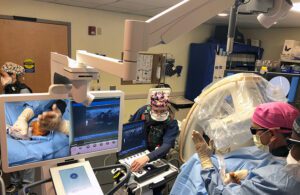An expanding customer base, rapidly advancing technology and intense cost pressures are driving medtech companies to use surgical telepresence to cost effectively meet customer needs, enhance customer relationships, develop new products faster and empower healthcare providers to raise the standard of care.
By Daniel Hawkins, Avail Medsystems

The medical technology medtech industry is relentlessly challenged to efficiently maintain growth, fund innovation, and provide an appropriate return to shareholders. Over the last decade, this has become increasingly difficult due to myriad challenges resulting from rapid expansion in the number of sites of service, declining reimbursement, relentless pricing pressures and increasing technical complexity across the industry.
Throughout my 30-year medtech career, I have touched every aspect of the product life cycle, from ideation to product release, market creation and widespread adoption. Whether for groundbreaking new technologies or incremental enhancements, core challenges in product development and commercialization are consistent: progressing along the product life cycle requires physical presence in operating rooms at every stage of the process.
As products are designed, tested, and moved to clinical trials, OR access is essential to optimize device performance and enroll patients in studies prior to regulatory approval. Absent the need for physical presence in ORs during this process, new products would reach the market more quickly.
Launch and early commercialization tests a company’s ability to train field teams and surgeons at scale, again due to the requirement for physical OR presence. Absent this requirement, launch and market penetration could accelerate, yielding higher first 12-month revenues, higher return on investment and incremental resources to fund further product innovation.
Catch Avail Medsystems CEO Daniel Hawkins at DeviceTalks Boston May 10-11, 2023
The requirement for physical OR presence to serve customers becomes a burden on established products where medtech companies need to tightly manage medical education and go-to-market costs across an expanding customer base while navigating intense competition, pricing pressures and growth requirements. Travel time between accounts wastes 50%-plus of selling time, further limiting growth for premium priced products, and exacerbating the cost burden for price-sensitive ones.
Q: Should go-to-market strategies be essentially the same regardless of product type, market dynamics and product/market maturity?
A: Likely not, but often that’s exactly what’s happening.
Properly selected technology can enable customization of commercial activities such that existing staff can efficiently meet the needs of nearly any medtech business, regardless of stage or market dynamics.
Across much of the medtech industry, there is a pressing need to:
- Deepen customer relationships
- Accelerate the pace of innovation
- Deliver operating profits to fund continued product innovation
- Re-invent go-to-market strategies to align with market dynamics
- Cost effectively grow revenues
- Unlock operating leverage with existing sales teams
The common denominator impacting all the above is the need to be physically present in the OR. A powerful set of new technologies known as surgical telepresence connects the medtech companies, surgeons, and digital tools to and from the operating room has emerged as a potent force, fueling a transformation in every stage of procedural healthcare.